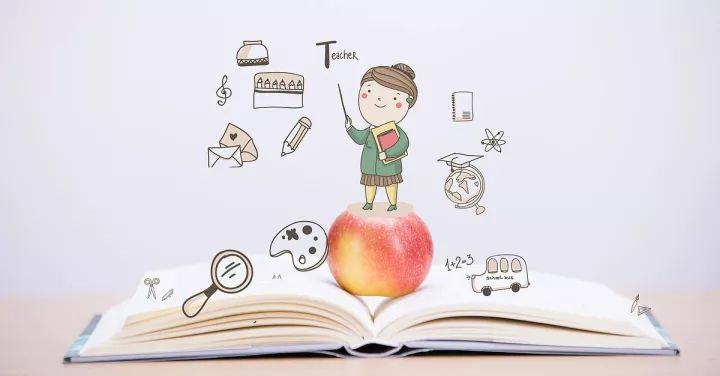成都暑假辅导班 英语教学课堂用语的分类和使用
2019-08-06 12:17作者:admin来源:未知>次阅读
Have I made it clear?
Now, let’s enjoy the song from the tape.
Good , you look great/ wonderful today.
Wish you a good weekend.
OK, go!
Would you like to try, Mary?
对学生有创意的、创新的思维火花及灵感,发言中的闪光点的肯定可以使用以下的用语:
Hi! Good morning/ afternoon.
Did he/she do a good job?
在组织课堂教学时,教师使用的指示语和演示语要避免过长和含糊不清,要力求简洁、清晰并且和蔼、可亲,避免过于生硬。例如:
You did a good job! (We’re so proud of you!)
⑥ 鼓掌---当学生任务完成得出色时,教师可鼓掌表示赞扬。也可以号召学生一起鼓掌。掌声可以使人产生成就感,增强自信心。
Let’s call it a day today. I’ll see you the day after tomorrow.
1、本文来源于网络,文章内容仅代表作者本人观点.
(You’ve got a beautiful name. I really like it. )
Don’t forget your homework. It’s … on page …, …on page…
Come on! Think it over. I’m sure you can do it.
You look so happy, any good news?
Have a nice day!
Do you know the Chinese/English of the word…?
2、版权归相关权利人所有,尊重知识与劳动,转载请保留版权信息。如存在不当使用的情况成都暑假辅导班,请随时与我们联系删除。
Now class/ boys and girls/ children, here’s your homework. Please do … and …

Class dismissed.
We’ll end up the class now.
Please work in pairs/ in groups/ individually/ by yourselves.
Very good!(I really enjoy it.)
Can you spell the word “…”?
Please stop here.
Have a good weekend!
You see the point?
Class is over.
It’s your turn, Sue.
Now, let’s do the exercise.
That’s very close. Go on!
Is it clear to you?
参考用语:
You are such a smart boy/girl!
Now, listen to me, please.
课堂教学结束时教师需向学生宣布成都暑假辅导班,并向学生道别。
⑦ 抚摸孩子的头成都暑假辅导班,拍拍孩子的肩膀也是一种鼓励性的非语言行为的评价手段。这一手段的使用会使回答正确的孩子心中荡起美孜孜的幸福感和对老师的亲近感。这种感觉可以拉近孩子和老师的距离,拉近他们和英语课堂的距离,使他们喜欢上课并激发表达的欲望。对于回答错误的孩子,这一手段的使用可以起到安慰、消除他们心中的不安及沮丧、缓解焦虑情绪的作用。(此方法仅可用于低年级)
Good boy/ girl . That’s a good answer. Thank you.
Wonderful!(I’m so proud of you.)
Your answer is very good! (I admire your work.)
当学生犯错误时,教师要避免使用否定的评价语言,如:You are wrong. It’s not correct. 对回答不出问题来的学生不要简单地使用“Sit down”,要给他们可能获得成功的机会,鼓励他们,保护他们的学习积极性。
Who’d like to help?
Now class/ boys and girls/ children , read after me/ the tape.
⑤ 一只手手心朝上不断煽动四指同时说道:Yes, come on, come on. 或Yes, go on。这种语言行为和非语言行为手势的同时使用,不仅对学生的发言是一种鼓励和肯定,同时还可以激励、引导学生将发言进行下去,启发学生思维。不断的启发和鼓励能够起到引导学生思维,培养思维习惯的作用。
非语言评价及策略
Good job! (I m very pleased with your work.)
See you next time, class/ boys and girls/ children.
Just follow me, class .
Today, we’re going to learn …
Who’d like to read the text?
Please read the … together. One, two, three, go!
Got it? / Did you get it?
Goodbye, class/ boys and girls/ children.
Come on, It’s very close.
Who’d like to have a try?
Good morning/afternoon, class./boys and girls.
What a bright idea! Thank you.
Who’d like to answer the question?
Would you like someone to help you?
在采用学生之间互相评价的手段时,教师要注意不要拿学生跟别人比,要拿学生同他自己比。教师可以说:同学们说某某同学说得好不好呀?进步大不大呀?
Now, listen to the tape.
(1)肯定式评语
Good point! (I really enjoy it.)
Come to the front, please. / … please come to the front . Thank you.
Are you OK with the practice?
Please show me how well you can do/ read it.
教师在使用肯定式评语对学生的课堂表现进行肯定和表扬时,一定要让学生感到老师是在由衷地夸奖他。要避免敷衍和流于形式。不要滥用‘Good’。有的老师过多地单一使用 ‘Good’ 评价学生的表现,很难使学生从中受到激励,激发学习的积极性。
I couldn’t believe my ears!
Do you want to try, Lee?
Good!Thank you. (I could see you’ve practiced a lot.)
This time, you do it one by one.
Would you like a second try?
Any one/ boy/ girl?
It’s almost right. Try again, please.
Not bad. Thank you. (I’m sure you can do better next time.)
参考用语:
3.反馈语
Excellent! (Let’s give him/her a big hand!)
① 微笑加语言。
Isn’t it a good answer?
Well done! (Good boy/girl.)
教师的课堂教学实际上从其走进教室的那一刻起就开始了。A good beginning makes a good ending. 一个好的开端对于一堂课来说非常重要。教师主动、友好地同学生打招呼,不仅可以唤起学生的注意力,使其为开始上课作好准备,还可以创造一个平等、和谐、愉快的学习氛围,以保证课堂教学的顺利进行。
1.招呼/问候语
在语言评价中教师一定要注意语言的使用及使用的策略性。教师的一句话有可能会影响学生的一生。如果教师总是说某个学生笨,这个学生有可能就会认为自己不是学习的料,因而放弃努力。当学生对自己没有信心时,教师的一句鼓励的话,就有可能激励他获得成功。因此,教师在课堂上一定要注意所使用的语言,要注意体现反馈语的“人本性”,注重学生的情感因素。
(That’s a nice name.)
在让学生参加评价时可以使用疑问和反意疑问句:
对学生有创意的,创新的思维火花及灵感要及时地、充分地、大大地给与肯定。不妨使用夸张些的语言。
反馈语是课堂教学活动的重要组成部分,是教师评价和评估学生课堂表现的重要手段,也是推动教学活动进展的有效方法。对学生英语学习的评价现在提倡多种方式和多元化。这其中反馈语是教师对学生课堂表现的一种评价方式。教师要注意树立评价意识。不仅要对学生课堂上的学习表现给予评价,对学生情感、态度的表现都应通过评价给予鼓励,达到激励学生的目的。
How are you doing?
(2)参与式评语
What’s the English/Chinese for “…”?
Who knows the answer?
Not bad. Go on, please.
非语言评价—既运用手势,表情(眼神、面容、微笑)及其他肢体动作语言(body language) 来对学生的学习进行的评价。在使用语言行为评价方式的同时注意非语言评价方式的使用可以加强评价效果。
You got sharp eyes/ears.
Quite good! (I really appreciate your effort.)
Now, let’s sing the song… together.
OK, class/ boys and girls , are you ready to have class/begin?
That’s a fantastic answer, isn’t it?
Work with your partner and answer the questions.
④ 竖起大拇指,可表示一种高度的赞赏。增强自信心,获得成就感。
How’s it going?
Great! (You did a good job.)
Please do it now.
It’s so nice/I’m so happy to see you again.
See you.
2.提问语
Let’s start our class, shall we?
(Instead of saying: “You”)
Are you alright with it?
Now, class/ boys and girls/ children, find a partner and role-play the conversation.
See you later.
版权声明
Have you done/finished your work/exercise yet?
如:
反馈语可分为肯定式评语、参与式评语和启发式纠错。
OK, class/ boys and girls/ children, time is up. Please stop working/ talking now.
Now class/ boys and class, class begins.
I’m sorry. Would you like a second try? /Would you like to try again?
③ 惊讶的表情 可表示赞赏。
Thank you. Please go back to your seat.
Now, class/ boys and girls/ children, please look at the blackboard/picture/your books/ page five.
方式和策略:
Who can answer the question?
Now, I’ll read the …, please follow me.
Let’s have/ take a break.
Any volunteer?
Perfect! (You re very professional.)
I’m sure you can do it if you really try. (See? You did it really well.)
教师在提问时态度和声音要和蔼、可亲。提问语的使用要注意体现对学生的尊重,不要让学生感到紧张,有压力。注意提问语的使用策略可减轻学生的学习焦虑情绪,保护学生的学习积极性。
在使用语言行为评价时教师要注意语气和目光的注视,使学生对老师的表扬和肯定感到真切。
Shall we begin our lesson now?
Is it good?
Now, break time.
Now, class/ boys and girls/ children, write/put the Chinese/English under/next to each word/picture.
Yes, please. (To answer “ Let me try or let me answer the question ”)
OK, class/ boys and girls/ children, that’s all for today. I’ll see you next time.
Nice going! (You make a great progress.)
Clever! (I envy you very much。 )

Sorry, I’m sure you can do it better next time.
Do you like his/her answer/reading?
That’s a great answer. (I really like it.)
Good class/ boys and girls/ children, be quite, please.
Now, open your books, please. Turn to page ...
Follow me, please.
Tim, would you like to have a try?
参考用语:
OK, class/ boys and girls/ children , please stand up.
4.指示/演示语
It doesn’t matter. I’m sure you can do it better next time.
② 用力点头---是一种肯定。
Well, let’s go on. Please look at page …
5.告别语
He/she did an excellent job, didn’t he/she?
Thank you. You can go back now.
Please sit down.
(3) 启发式纠错
Alright class/ boys and girls/ children. We’ll stop here today.
Smart! (What an adorable baby!)
Bye, class/ boys and girls/ children.
Who can spell the word “…”?
Could you tell me your name, please?
May I know your name?
